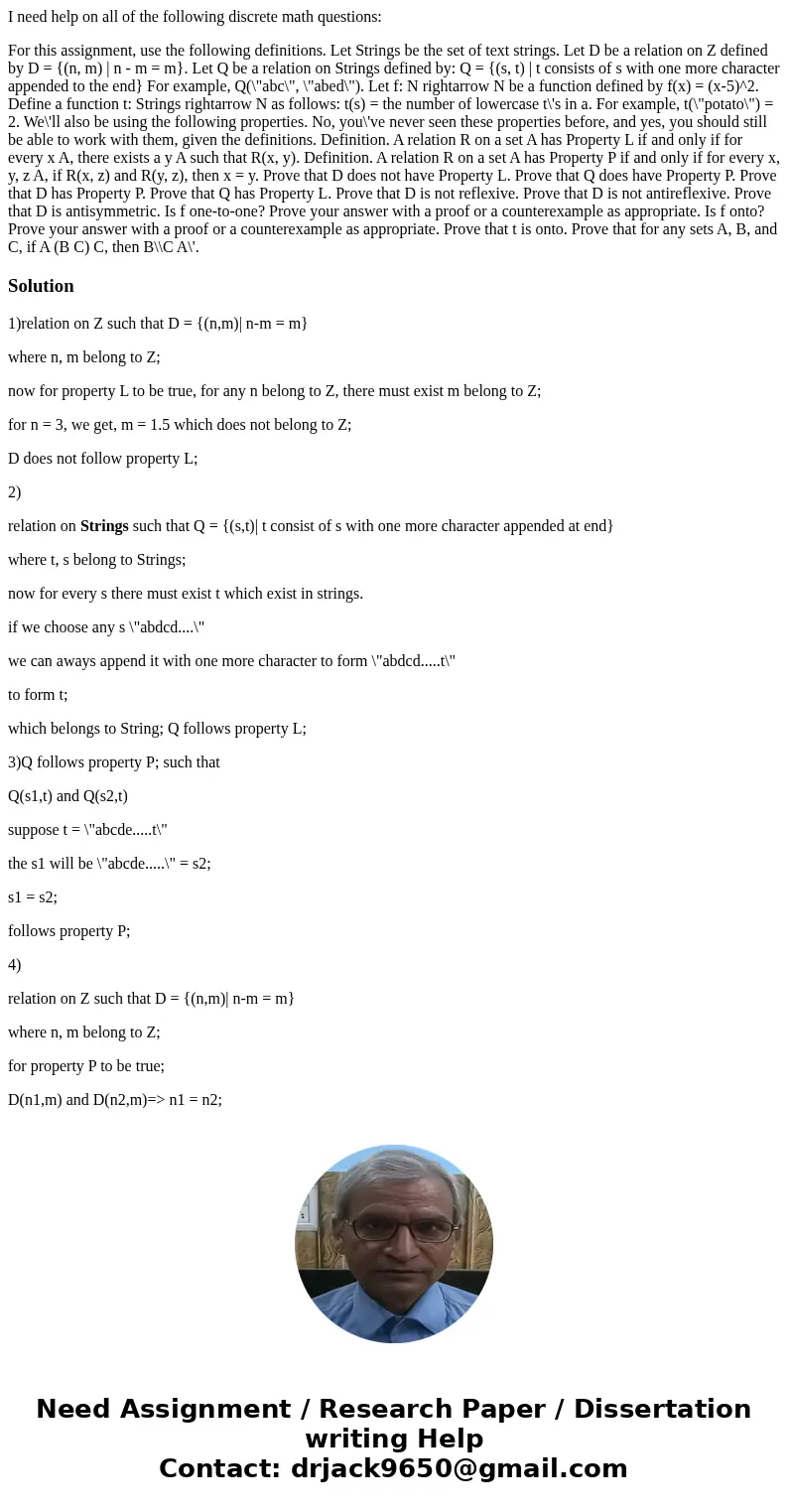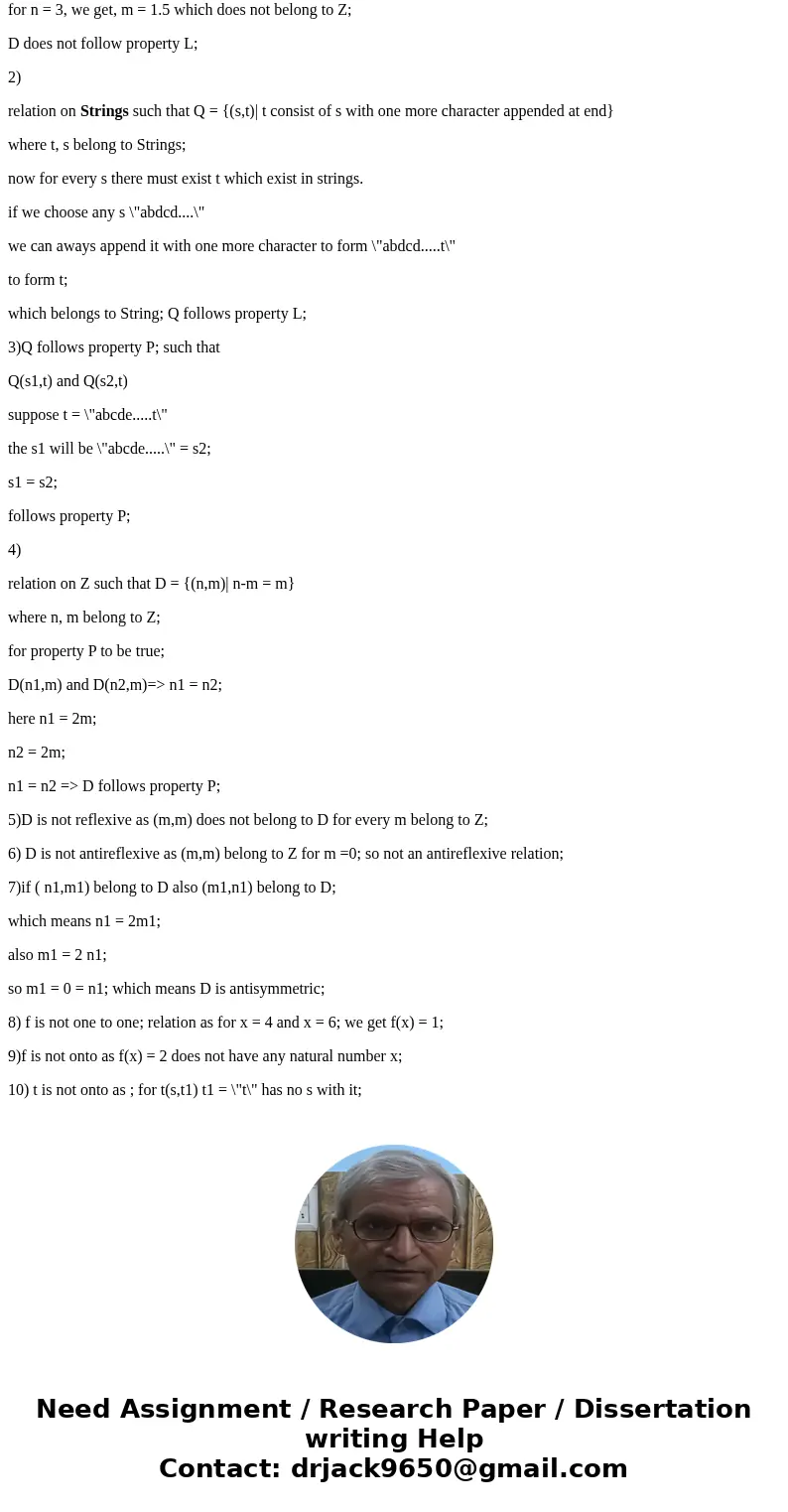I need help on all of the following discrete math questions
I need help on all of the following discrete math questions:
For this assignment, use the following definitions. Let Strings be the set of text strings. Let D be a relation on Z defined by D = {(n, m) | n - m = m}. Let Q be a relation on Strings defined by: Q = {(s, t) | t consists of s with one more character appended to the end} For example, Q(\"abc\", \"abed\"). Let f: N rightarrow N be a function defined by f(x) = (x-5)^2. Define a function t: Strings rightarrow N as follows: t(s) = the number of lowercase t\'s in a. For example, t(\"potato\") = 2. We\'ll also be using the following properties. No, you\'ve never seen these properties before, and yes, you should still be able to work with them, given the definitions. Definition. A relation R on a set A has Property L if and only if for every x A, there exists a y A such that R(x, y). Definition. A relation R on a set A has Property P if and only if for every x, y, z A, if R(x, z) and R(y, z), then x = y. Prove that D does not have Property L. Prove that Q does have Property P. Prove that D has Property P. Prove that Q has Property L. Prove that D is not reflexive. Prove that D is not antireflexive. Prove that D is antisymmetric. Is f one-to-one? Prove your answer with a proof or a counterexample as appropriate. Is f onto? Prove your answer with a proof or a counterexample as appropriate. Prove that t is onto. Prove that for any sets A, B, and C, if A (B C) C, then B\\C A\'.Solution
1)relation on Z such that D = {(n,m)| n-m = m}
where n, m belong to Z;
now for property L to be true, for any n belong to Z, there must exist m belong to Z;
for n = 3, we get, m = 1.5 which does not belong to Z;
D does not follow property L;
2)
relation on Strings such that Q = {(s,t)| t consist of s with one more character appended at end}
where t, s belong to Strings;
now for every s there must exist t which exist in strings.
if we choose any s \"abdcd....\"
we can aways append it with one more character to form \"abdcd.....t\"
to form t;
which belongs to String; Q follows property L;
3)Q follows property P; such that
Q(s1,t) and Q(s2,t)
suppose t = \"abcde.....t\"
the s1 will be \"abcde.....\" = s2;
s1 = s2;
follows property P;
4)
relation on Z such that D = {(n,m)| n-m = m}
where n, m belong to Z;
for property P to be true;
D(n1,m) and D(n2,m)=> n1 = n2;
here n1 = 2m;
n2 = 2m;
n1 = n2 => D follows property P;
5)D is not reflexive as (m,m) does not belong to D for every m belong to Z;
6) D is not antireflexive as (m,m) belong to Z for m =0; so not an antireflexive relation;
7)if ( n1,m1) belong to D also (m1,n1) belong to D;
which means n1 = 2m1;
also m1 = 2 n1;
so m1 = 0 = n1; which means D is antisymmetric;
8) f is not one to one; relation as for x = 4 and x = 6; we get f(x) = 1;
9)f is not onto as f(x) = 2 does not have any natural number x;
10) t is not onto as ; for t(s,t1) t1 = \"t\" has no s with it;


 Homework Sourse
Homework Sourse